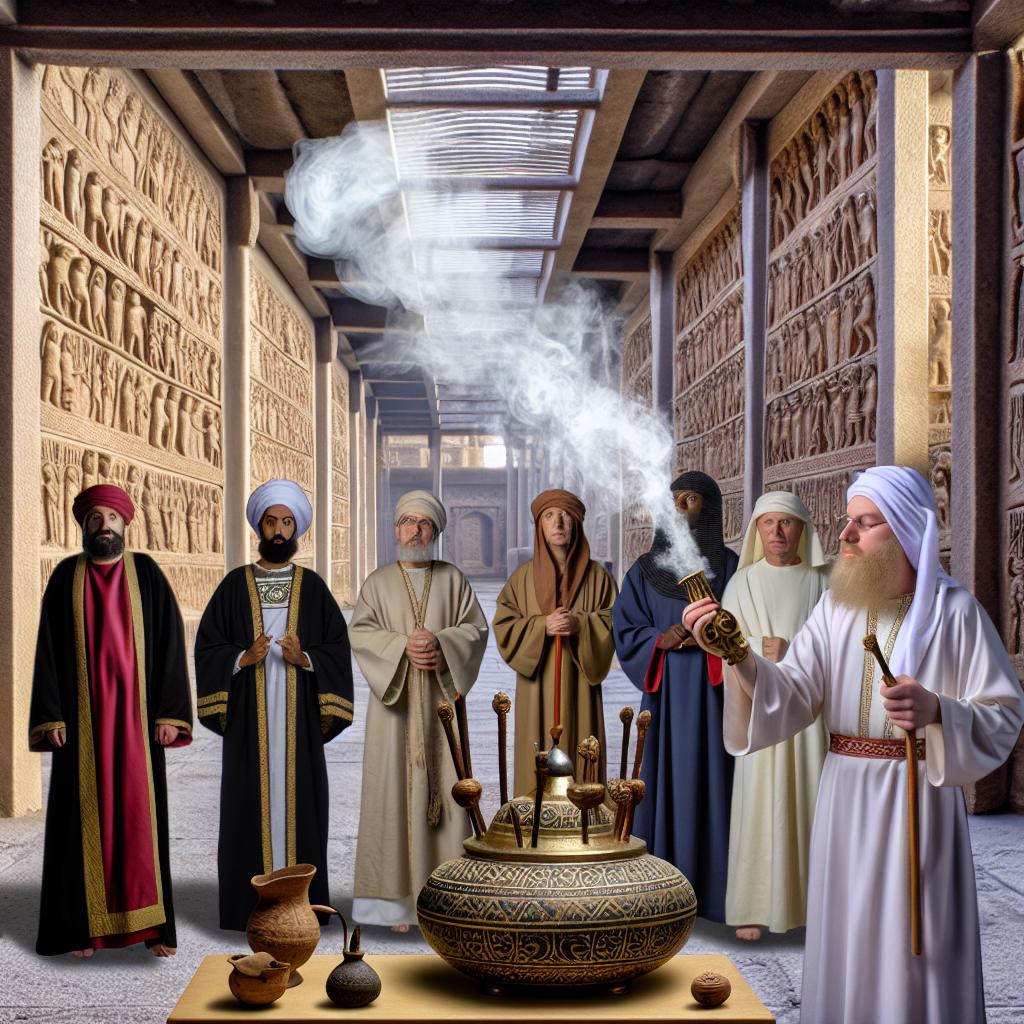Content:
The Importance of Frankincense in Ancient Rituals
Frankincense, a resin obtained from the Boswellia tree, has long been cherished across different cultures for its multifaceted roles in religious rituals and ceremonies. This ancient substance was considered invaluable, not only for the compelling aroma it produced but also for its deep symbolic significance in spiritual practices.
Usage in Ancient Egypt
In the grand and sophisticated civilization of ancient Egypt, frankincense played a fundamental role, transcending the realm of the ordinary to become a vital component of both sacred and everyday life. The Egyptians held the belief that burning frankincense allowed them to communicate with the divine; the spirals of smoke ascending to the sky were said to carry prayers and supplications directly to the celestial realms, creating a conduit between mortals and deities. Furthermore, the resin was integral to the elaborate process of embalming. Its use in this practice was meant to purify the corpse and preserve it for the afterlife, underscoring the profound respect the Egyptians had for the afterlife and the spiritual purity that frankincense was believed to confer.
Significance in Ancient Near Eastern Cults
The ancient Near East was a region marked by rich and diverse religious expressions, within which frankincense was deeply embedded. This resin was a staple element in temple rituals across many cultures in the area. The act of burning frankincense on altars functioned as an offering to appease the numerous deities worshipped, with the sweet, fragrant smoke symbolizing piety and readiness to comply with divine will. This symbolic gesture of burning incense was seen as both an invocation and a means to secure the favor and benevolence of these gods, thus ensuring the well-being and prosperity of worshippers and their communities.
Frankincense in Judaism
Within the framework of Jewish religious customs, frankincense held a place of sacred importance. It was a critical ingredient in the creation of the sacred incense formula, as prescribed in the Book of Exodus in the Torah. This recipe denotes a blend used exclusively for worship within the Temple of Jerusalem. The burning incense smoke was much more than a mere olfactory delight; it was a profound symbol of divine presence. To the ancient Jews, this practice epitomized purification and holiness, playing a crucial role in the spiritual life of the community and the rituals surrounding temple worship.
Frankincense in Christian Traditions
The significance of frankincense permeated into Christian traditions, most notably in the narrative of the Three Wise Men or Magi, who are documented to have presented gifts of gold, frankincense, and myrrh to the infant Jesus. This offering of frankincense was symbolically rich, heralding Jesus’s divine and kingly status. It not only underscored the resin’s historical role as a medium connecting the divine and the earthly but also highlighted its enduring spiritual relevance in Christian theology and art.
Its Role in Hindu Rituals
In the Hindu tradition, frankincense, or “Dhoop” as it is referred to in Sanskrit, remains integral to a variety of religious ceremonies and rites. Within Hindu temples and households, it is used to purify the air and establish an aura of tranquility and spirituality, particularly in homa or fire rituals that are dedicated to the various deities of the pantheon. The continual use of frankincense in these ceremonies underscores its symbolism of purity and sanctity, marking it as a significant element in rituals that bridge the temporal and spiritual worlds.
Conclusion
Through time and across cultures, the role of frankincense in ancient religious practices was as complex as it was profound. Its uses extended beyond its valued aromatic and preservative properties to encompass deep symbolic importance, crafting a poignant connection between humanity and the divine. This historic role of frankincense resonates through spiritual traditions, offering an enduring testament to its revered status. For those interested in exploring the historical dimensions of frankincense further, scholarly texts and articles dedicated to the study of ancient religious practices can provide deeper insights.
